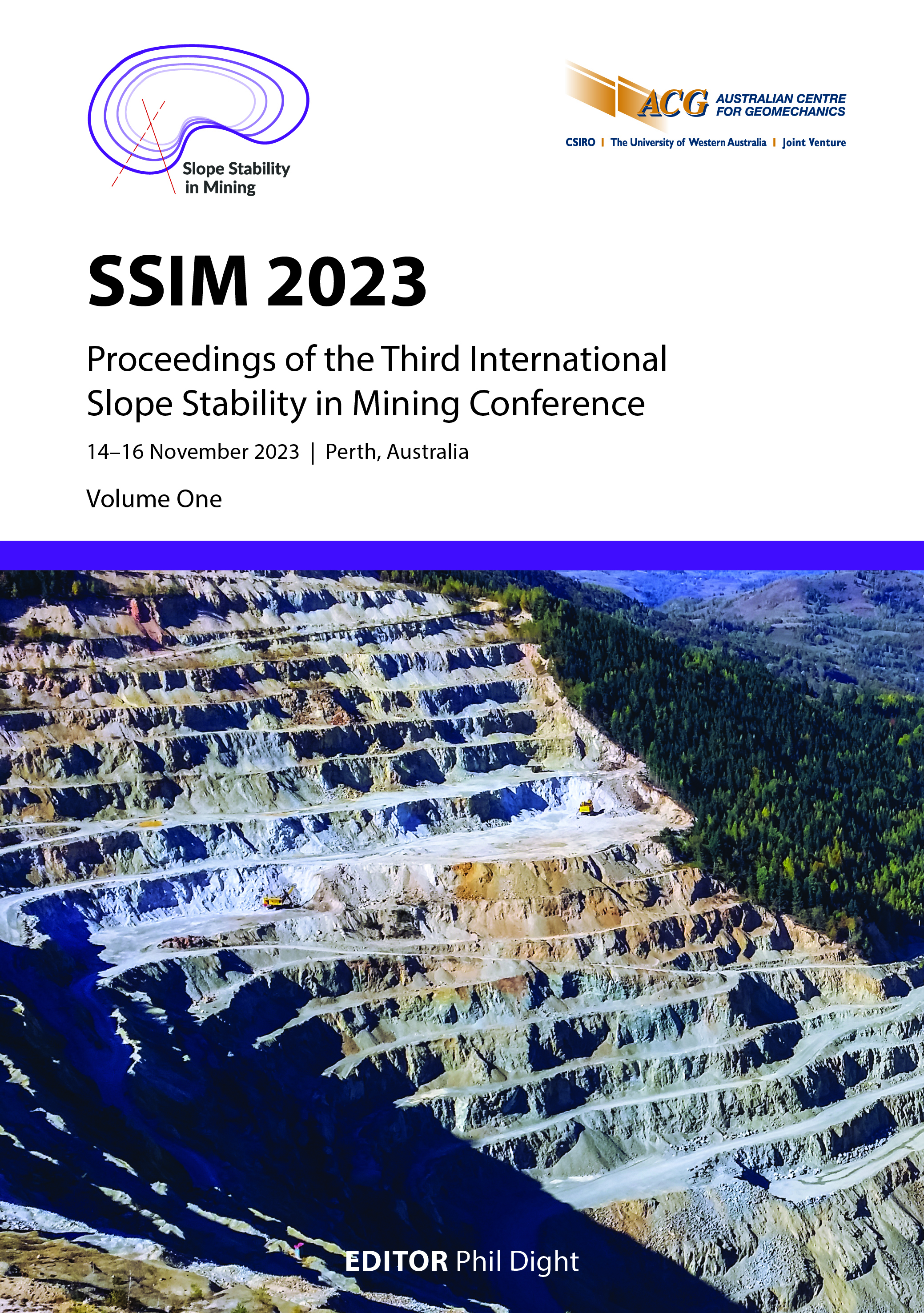The effect of hydrothermal alteration of the host rock mass on the slope stability of an open pit mine at Tujuh Bukit, East Java

|
Authors: Koriawan, GP; Hartman, W; Ma'waleda, M; Pachri, H |
DOI https://doi.org/10.36487/ACG_repo/2335_13
Cite As:
Koriawan, GP, Hartman, W, Ma'waleda, M & Pachri, H 2023, 'The effect of hydrothermal alteration of the host rock mass on the slope stability of an open pit mine at Tujuh Bukit, East Java', in PM Dight (ed.), SSIM 2023: Third International Slope Stability in Mining Conference, Australian Centre for Geomechanics, Perth, pp. 245-260, https://doi.org/10.36487/ACG_repo/2335_13
Abstract:
Tujuh Bukit (BSI), located in East Java, Indonesia, is an open pit gold mining operation by PT Bumi Suksesindo, a wholly owned subsidiary of PT Merdeka Copper Gold. Slope instability is a significant problem often arising in open pit mining. The Tujuh Bukit mine is experiencing some instability due to variability in the rock mass geotechnical characterisation. The rock mass geological character, which has an igneous origin with a hydrothermal alteration undertone, appears to have changed the rock mass behaviour. Hydrothermal alteration can change the physical and mechanical properties of the original rock mass. This modified condition is not always sufficiently considered in the design of open pit mines. With exposure to the elements, the rock mass deteriorates rapidly and the pit slopes become unstable and difficult to manage. For this reason it is necessary to carry out detailed geotechnical investigations and laboratory testing to determine if the rock mass alteration is likely to have a destabilising effect. It requires detailed planning and diligence to ensure additional core samples are collected during the geotechnical drilling program and investigation. A point load index (PLI) testing program was carried out on core samples in the laboratory to determine the hardness change for each of the lithologies. This data was obtained to support the slope stability analysis modelling. This paper shows that it is necessary to determine the presence of hydrothermal alteration as it appears to have a strong influence on slope instability. It was further necessary to isolate the occurrence and the type of alteration within the geotechnical model by assigning rock mass zoning codes based on the variability of the rock strength for each type of alteration as the effect can greatly affect the rock mass strength.
Keywords: hydrothermal alteration, point load index, slope stability, open pit mine
References:
Bieniawski, ZT 1989, Engineering Rock Mass Classifications: A Complete Manual for Engineers and Geologist in Mining, Civil, and Petroleum Engineering. Wiley- Interscience, New York.
Bieniawski, ZT 1975, ‘Point load test in geotechnical practice’ Engineering Geology, vol. 9, pp. 1–11.
Hoek, E, Carter, TG & Diederichs, MS 2013, ‘Quantification of the geological strength index chart’, Proceedings of the 47th US Rock Mechanics/Geomechanics Symposium, American Rock Mechanics Association, Alexandria.
Knight Piesold Consulting 2022, Tujuh Bukit Copper Gold Project – Seismic Hazard and Heap Leach Pad Stability Assessment Summary, Knight Piesold, Sandton.
Martin, D & Stacey, P 2018. Guidelines for Open Pit Slope Design in Weak Rock, CRC Press, Boca Raton.
Read, J & Stacey, P 2009, Guidelines for Open Pit Slope Design. CSIRO Publishing, Clayton.
documentation/rs2-model/SRF-stability-analysis/shear-strength-reduction-overview)
© Copyright 2024, Australian Centre for Geomechanics (ACG), The University of Western Australia. All rights reserved.
View copyright/legal information
Please direct any queries or error reports to repository-acg@uwa.edu.au
View copyright/legal information
Please direct any queries or error reports to repository-acg@uwa.edu.au

